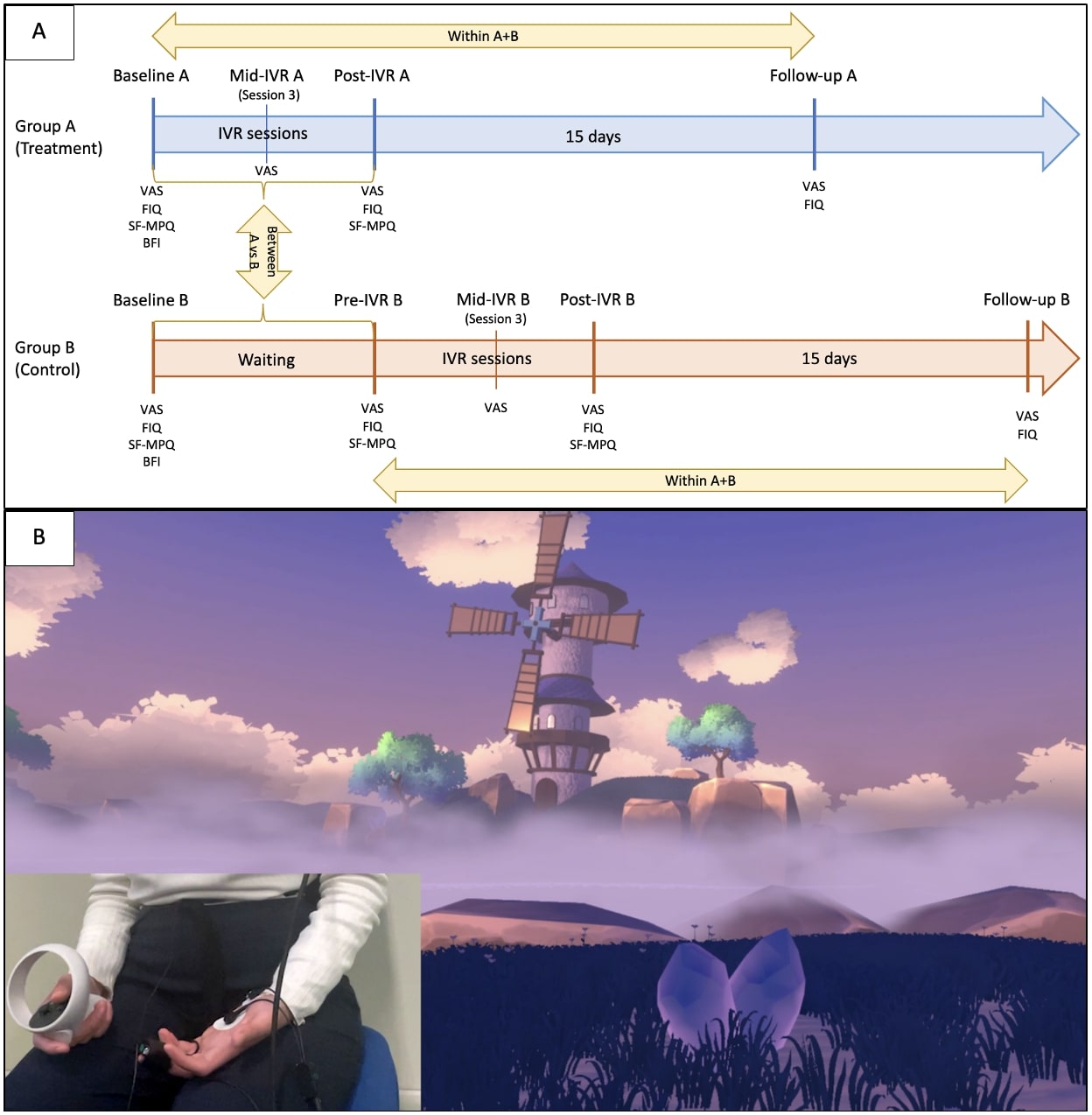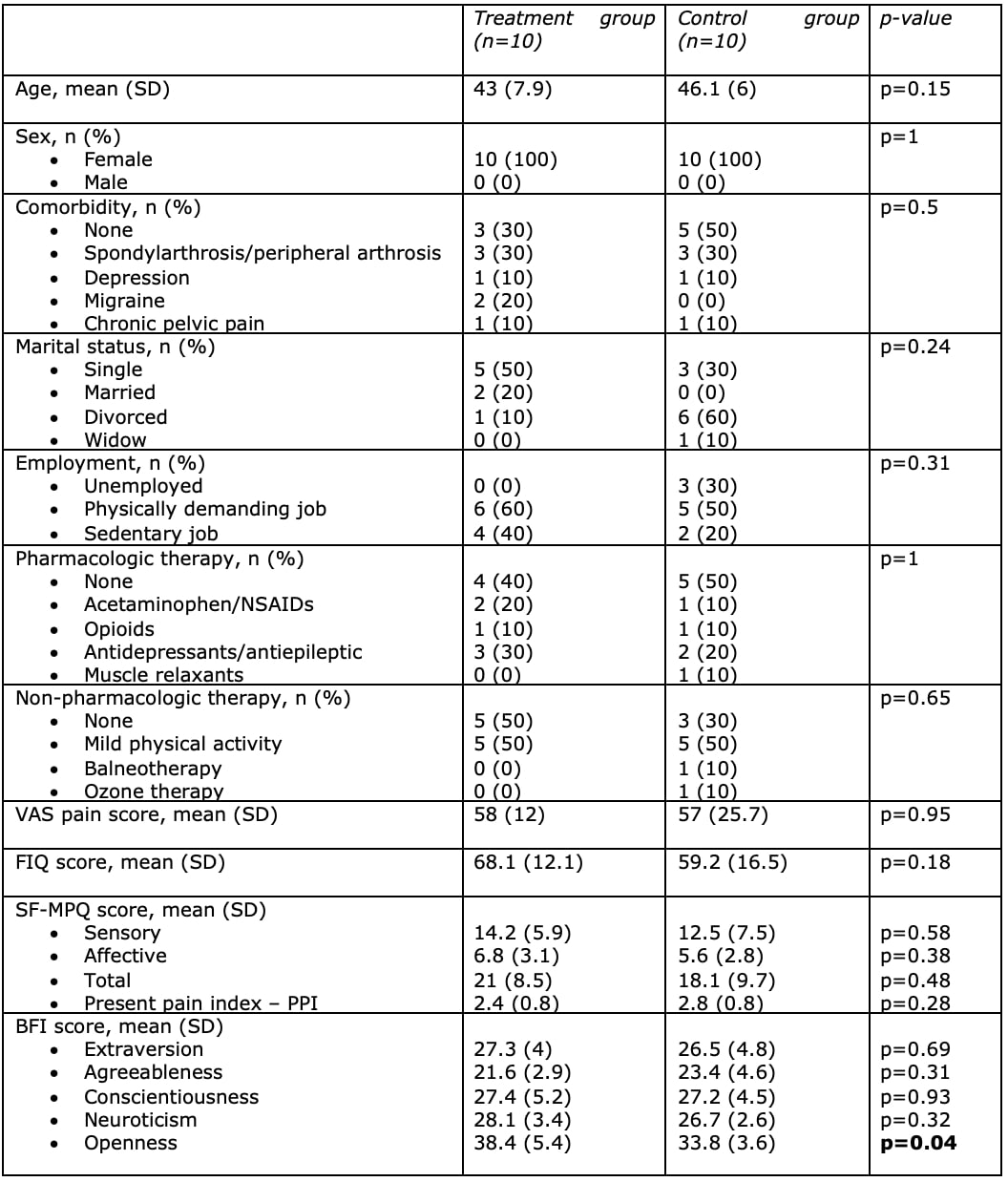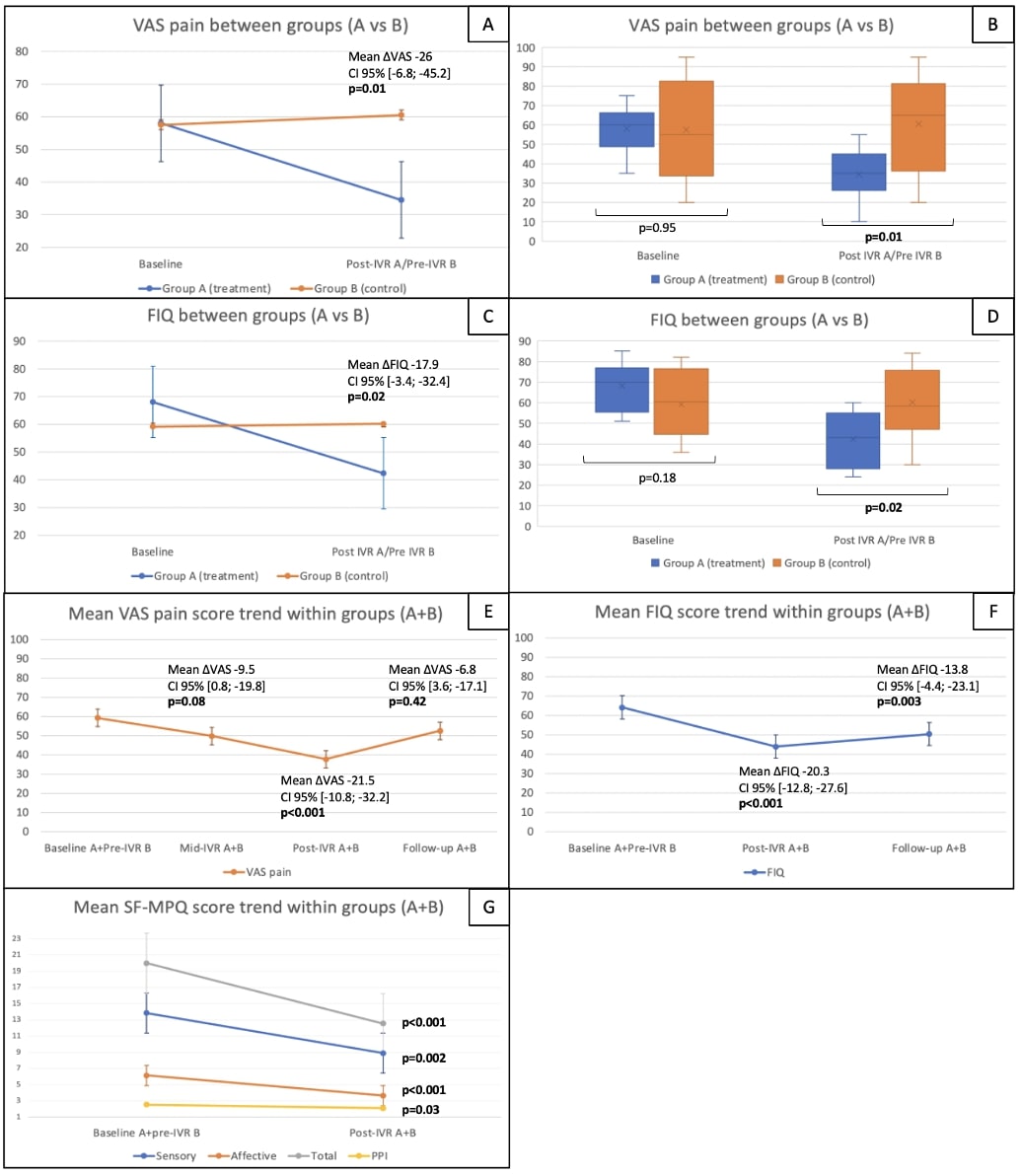Session Information
Session Type: Poster Session B
Session Time: 10:30AM-12:30PM
Background/Purpose: Fibromyalgia (FM) affects 2% of the global population, causing chronic musculoskeletal pain, fatigue, sleep and mood disorders, significantly impacting quality of life. Although many approaches have been proposed, including biofeedback (BF), the treatment of FM remains an unmet need, with a high risk of NSAIs and opioid abuse. Immersive virtual reality combined with biofeedback (IVR-BF) has emerged as a promising tool in the management of anxiety, stress, and pain; its role in the treatment of FM remains, however, unexplored. Our purpose is to evaluate the efficacy and acceptability of an IVR-BF intervention in improving chronic FM pain and the impact of FM on patients’ daily lives.
Methods: Patients meeting 2016 ACR Revised Diagnostic Criteria for FM were enrolled and randomized into 2 groups, A (treatment) and B (control). After randomization Group A underwent 5 IVR-BF sessions within a maximum of 10 days (1 per day), while group B waited before undergoing IVR-BF sessions with the same modalities. Questionaries were administered at specific time points (Fig. 1a); pain intensity, subjective pain perception, overall FM impact, and personality traits were assessed using Visual Analog Scale (VAS), Short Form-McGill Pain Questionnaire (SF-MPQ), FIQ (Fibromyalgia Impact Questionnaire (FIQ), and Big Five Inventory (BFI), respectively. During IVR-BF sessions patients were immersed for 15 minutes in a soothing virtual environment using a MetaQuest2 headset and a joystick, performing breathing and relaxation exercises (Fig. 1b). ANOVA, Chi-Square, and t-test were used for analysis.
Results: 20 female FM patients were enrolled: 10 in group A and 10 in group B. Both groups were homogeneous at baseline, except for openness (Tab. 1). After IVR-BF, group A showed significant VAS pain and FIQ score reductions compared to group B (p=0.01; p=0.02, respectively) (Fig. 2a-d). Considering all the 20 patients (group A+B), early VAS pain improvement was registered during IVR-BF, reaching significance at last session (p< 0.01); however, at the follow-up visit, VAS pain increased compared to post-IVR-BF assessment, reaching pre-IVR-BF levels (p=0.42). A significant FIQ score reduction was seen after IVR-BF (p< 0.001), with a mild, nonsignificant increase at the follow-up visit compared to post-IVR-BF (p=0.23). Focusing on SF-MPQ in the 20 patients considered, post-IVR-BF intervention improvements were noted in sensory, affective, total, and present pain index domains compared to baseline (p=0.002, p< 0.001, p< 0.001, p=0.03, respectively) (Fig. 2e-g). No significant correlations were found between VAS pain, FIQ, SF-MPQ scores, and BFI personality traits (p >0.05). Almost all patients (18/20) expressed satisfaction with the IVR-BF interventions; no adverse events occurred.
Conclusion: IVR-BF emerges as a promising, innovative, and effective non-pharmacological treatment that could expand the therapeutic options for FM. This intervention significantly improves the intensity and perception of chronic FM pain and mitigates the overall impact of FM on patients’ daily lives. However, its efficacy appears to wane over time, suggesting the need for periodic re-treatment.
To cite this abstract in AMA style:
Chittaro L, Longhino S, Serafini M, Cacioppo S, Quartuccio L. Efficacy of Immersive Virtual Reality-based Biofeedback on Chronic Pain and Daily Life Impact in Fibromyalgia: A Pilot Randomized Controlled Trial [abstract]. Arthritis Rheumatol. 2024; 76 (suppl 9). https://acrabstracts.org/abstract/efficacy-of-immersive-virtual-reality-based-biofeedback-on-chronic-pain-and-daily-life-impact-in-fibromyalgia-a-pilot-randomized-controlled-trial/. Accessed .« Back to ACR Convergence 2024
ACR Meeting Abstracts - https://acrabstracts.org/abstract/efficacy-of-immersive-virtual-reality-based-biofeedback-on-chronic-pain-and-daily-life-impact-in-fibromyalgia-a-pilot-randomized-controlled-trial/



